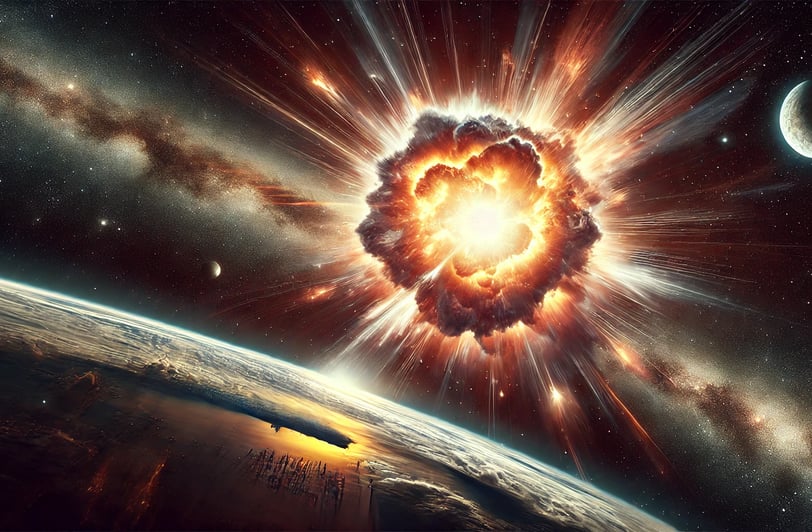Supernovas May Have Played a Role in Two of Earth’s Largest Mass Extinctions
The history of Earth is marked by mass extinction events that reshaped biodiversity and paved the way for new life forms. While some of these extinctions are attributed to geological causes or asteroid impacts, recent evidence suggests that supernova explosions may have played a significant role in at least two of the largest extinction events in Earth's history. This article explores this hypothesis, analyzing the mechanisms by which supernovas could affect terrestrial life, as well as the scientific evidence supporting this theory.
3/21/20252 min read


What is a Supernova?
Supernovas are cataclysmic explosions that occur when massive stars reach the end of their life cycle or when a white dwarf accumulates enough mass to trigger an uncontrolled nuclear reaction. These explosions release immense amounts of energy and heavy elements into space, potentially influencing the interplanetary environment of nearby star systems.
How Do Supernovas Affect Earth?
The influence of a supernova on Earth depends on its proximity and the intensity of the radiation it emits. The main effects include:
Gamma Radiation and Cosmic Rays: A nearby supernova can emit gamma radiation toward Earth, potentially damaging the ozone layer and exposing organisms to high levels of radiation.
Climate Changes: Cosmic rays originating from the explosion can ionize Earth's atmosphere, altering cloud formation and impacting global climate.
Increased Mutation Rates: Intense radiation can cause genetic mutations in living organisms, potentially leading to the extinction of more vulnerable species.
Supernovas and Mass Extinctions
Researchers speculate that supernovas may have contributed to at least two major mass extinctions:
Ordovician-Silurian Extinction (about 444 million years ago): The second-largest extinction event in Earth's history wiped out about 85% of marine species. Some scientists propose that a supernova may have damaged the ozone layer, leading to high levels of ultraviolet radiation reaching the oceans.
Devonian Extinction (about 359 million years ago): This extinction event also significantly affected marine life and may be associated with prolonged exposure to cosmic rays from a relatively nearby supernova.
Scientific Evidence
The main evidence linking supernovas to mass extinctions comes from the detection of rare isotopes in ancient sedimentary rocks. One example is iron-60, a radioactive isotope that does not naturally form on Earth and is produced in supernova explosions. Deposits of this isotope have been found in rock layers dating to the Ordovician and Devonian periods, suggesting a connection to astronomical events.
Challenges of the Hypothesis
Despite growing evidence, there are challenges in directly associating supernovas with mass extinctions:
Difficulty in Temporal Precision: Determining the exact date of a supernova and correlating it with an extinction event on Earth is a significant challenge.
Competing Terrestrial Factors: Volcanic events, climate changes, and asteroid impacts could have also caused these extinctions, making it difficult to isolate a single factor.
Conclusion
Supernovas are powerful events with the potential to profoundly affect life on Earth. Although they are not the only possible cause of mass extinctions, evidence suggests they may have contributed to events such as the Ordovician-Silurian and Devonian extinctions. Advances in astrophysics and geoscience will continue to clarify this connection, helping us better understand the impacts of astronomical events on the history of life on Earth.
Explore
Discover diverse topics in one convenient hub.
Connect
Learn
contact@mindstormblog.com
© 2025. All rights reserved.


